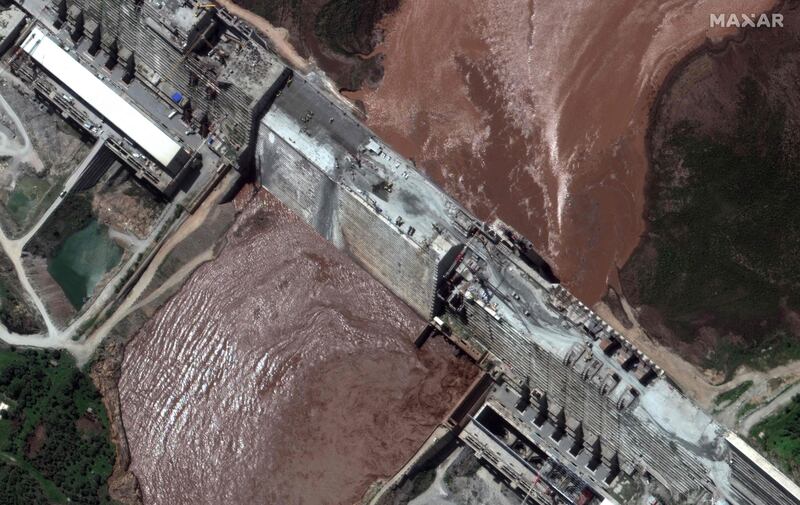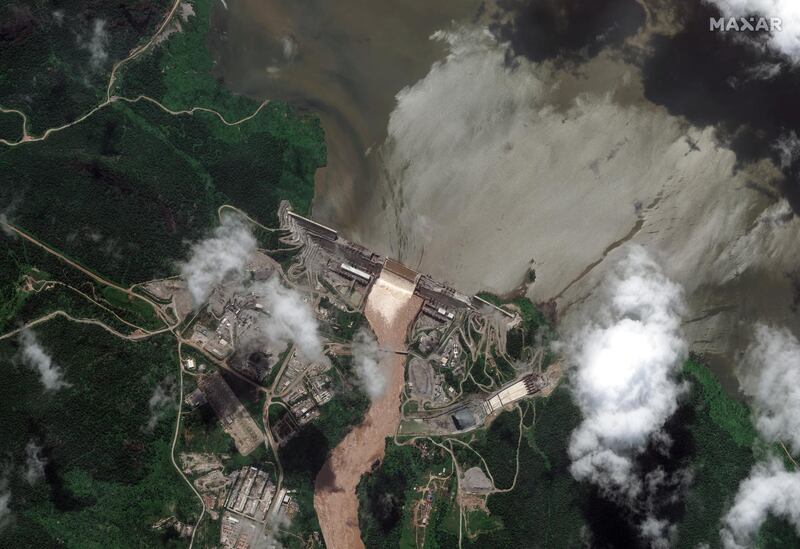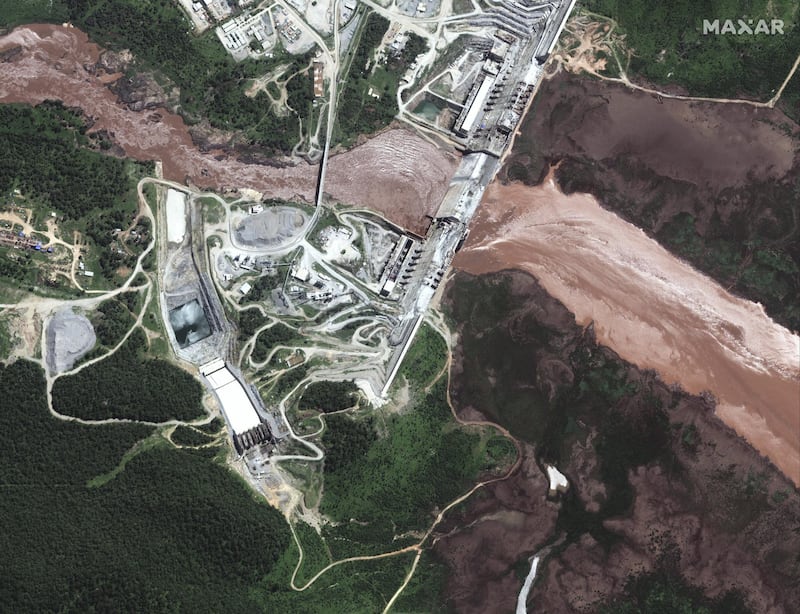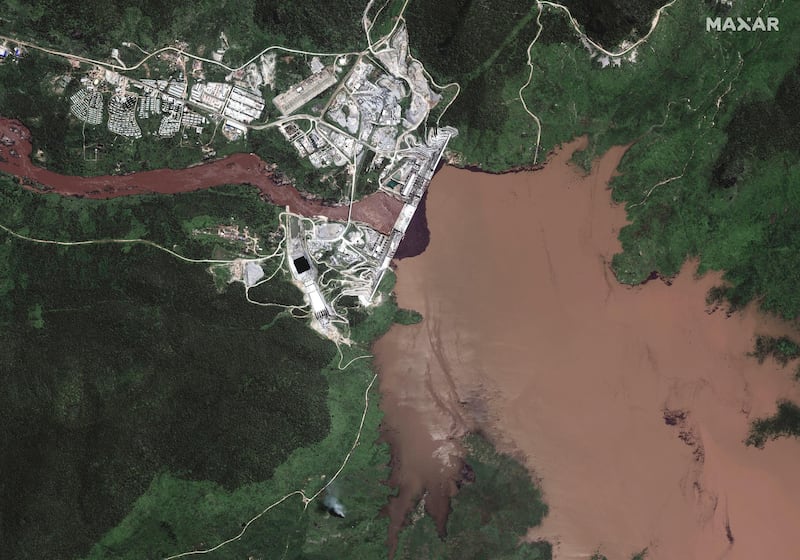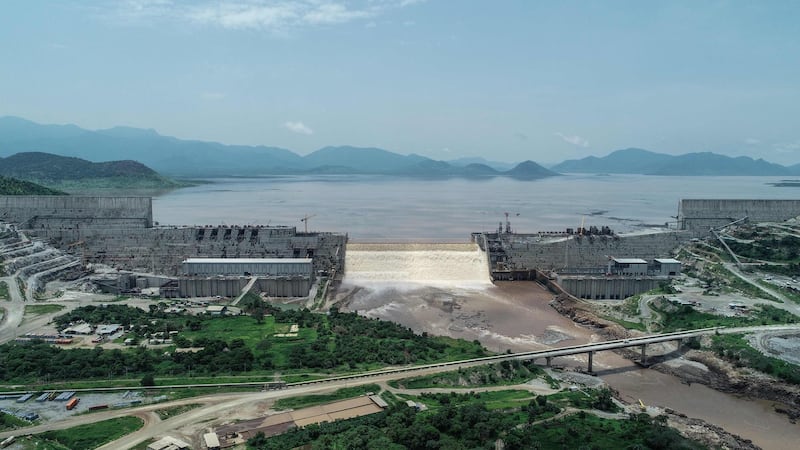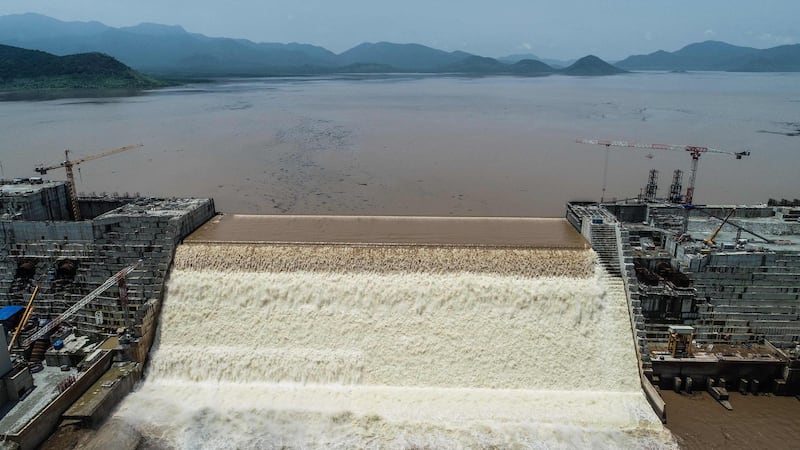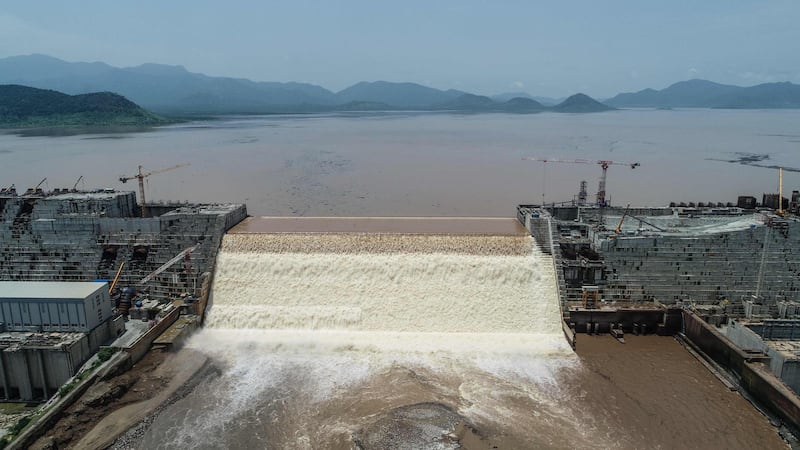Ethiopia said on Monday it has completed the second filling of its hydroelectric dam on the Blue Nile, despite strong opposition from downstream nations Egypt and Sudan.
“The second filling of our flagship project, the GERD [Grand Ethiopian Renaissance Dam], has been completed,” Ethiopian Irrigation Minister Seleshi Bekele announced in a series of tweets. “The dam’s two turbines will soon generate electric power. Congratulations, Ethiopia!”
In response, Sudan said it rejected Ethiopia’s unilateral actions and urged its neighbour to resume negotiations over the GERD.
Precautionary measures taken by authorities, it explained, have spared Sudan the impact the first filling had on the country, when work at water treatment plants was disrupted, leaving tens of thousands of homes without drinking water for days.
The Egyptian government has not responded publicly to Ethiopia’s most recent statement.
Egypt was not affected by 2020's filling, thanks to an abundant flood that filled the reservoir behind its Aswan Dam to near capacity. It is not likely to be affected by the second filling, again thanks to heavy rainfall on the Ethiopian highlands, the source of the Blue Nile and the river’s main tributary.

The Blue Nile thunders down eastern Sudan and meets the much less voluminous White Nile at the Sudanese capital Khartoum before they travel together through northern Sudan and the entire length of Egypt all the way to the Mediterranean. The Blue Nile contributes more than 80 per cent of the water reaching Egypt.
The Ethiopian minister did not say how much water was involved in the second filling.
Ethiopia initially said it would retain 13.5 billion cubic metres during the flood season in July and August, but experts later said construction delays meant that about a third of that amount would be added to the reservoir behind the $5 billion GERD project. Last year’s filling involved about four billion cubic metres.
Egypt and Sudan vehemently protested when Ethiopia announced the start of the second filling on July 5, three days before the two allies took their dispute with the Horn of Africa nation to the UN Security Council. The two did not want Ethiopia to go ahead with the filling before a legally-binding agreement was reached on the dam's operation.
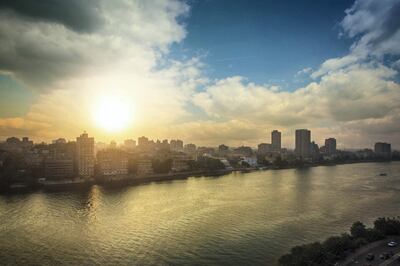
Ethiopia, which views the dam as essential to its development, says guidelines should suffice and has repeatedly assured Cairo and Khartoum that no harm will come to them from the GERD.
A decade of on-and-off negotiations have failed to produce a deal and the last round of talks collapsed in April.
Egypt, which depends on the Nile for nearly all its fresh water needs, fears the GERD would significantly reduce its share of the river’s water, disrupting its food balance and destroying hundreds of thousands of jobs.
Besides its concern over water shortages, Sudan says it needs Ethiopia to co-ordinate the operation of the GERD to ensure the smooth functioning of its own power-generating dams on the Blue Nile.
